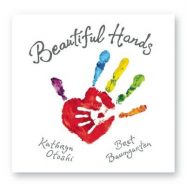Try Food as a Way Into Reading
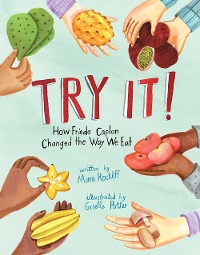
Learning is best done through experience, and food is definitely a way into learning for many of us. To tie reading in with some cool hands-on (and mouths-on) experiences, grab this biography, Try It! How Frieda Caplan Changed the Way We Eat written by Mara Rockliff and illustrated by Giselle Potter.
Apples, bananas, tomatoes, potatoes, these were almost the only things that Frieda Caplan saw when she went to her produce market. But Frieda wanted to try something different.
She brought mushrooms to sell. Everyone thought they were weird.
Until they tried them. Suddenly everyone wanted mushrooms. People even dubbed her the “Mushroom Queen”.
But she wanted more than just mushrooms.
She tried kiwi, jicama, sugar snap peas, cherimoya, champagne grapes. Red bananas, baby corn, star fruit! All kinds of new foods! She brought them all to her produce market.
And people tried them. And liked them!
A master teacher, Ed Spicer, taught his first graders that learning is all about trying. He encouraged his students to celebrate trying something new, even if they weren’t successful at first, even if they didn’t like it – that in itself is learning. You can create really memorable learning experiences by reading Try It! How Frieda Caplan Changed the Way We Eat and talking about new food.
Read this book with your kids/students/campers and talk about foods that seemed weird before you tried them. Are there foods they didn’t like before but now they do? You can make charts together of interesting foods and kids can put their names in the columns of “Yes, I like it” or “No, I don’t like it” or “I don’t know – I haven’t tried it yet”. If you have food magazines, kids can cut out foods they like and foods they want to try. Model for them, if kids start saying something is gross, that you used to think a certain food was gross but that part of growing up is that your tastes develop. Tell them about foods you used to think were weird that you now enjoy.
If you’re working with your own children or with children you know don’t have any fruit/vegetable allergies, you can bring in something like star fruit to try. I have researched allergies and it turns out for almost every food, someone is allergic to it. (Check out verywellhealthy.com – I never knew some kids aren’t bluffing about being allergic to broccoli!) To play it safe with a large group of kids, pick a cooked fruit, like applesauce. (Still, avoid anything with strawberries.) Do you think green applesauce is weird? What about pear sauce? Weird food is only weird until you try it!
Read MorePlay the Book!
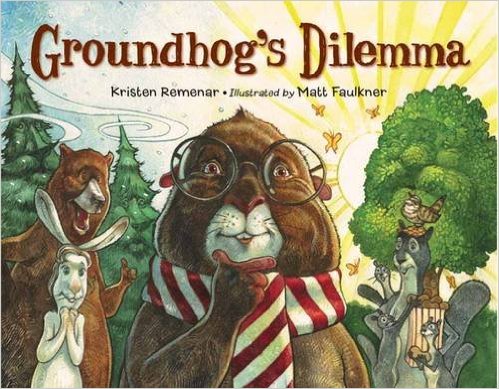
Oh, 2021, we waited all through 2020 for you and frankly, you’re not off to the start we’d hoped for. We’re exhausted in so many ways. We still need to show up for our little ones. We need a bit of lightheartedness. “Playing the book” is a fun way to connect while it helps your child deepen their understanding of a story.
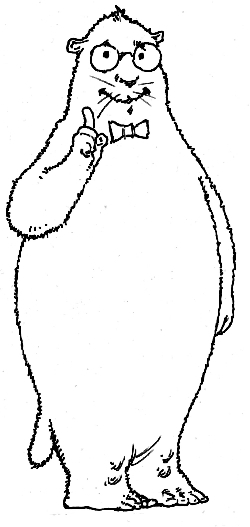
Groundhog and all of his friends are ready to be printed, colored, cut out, and played with!
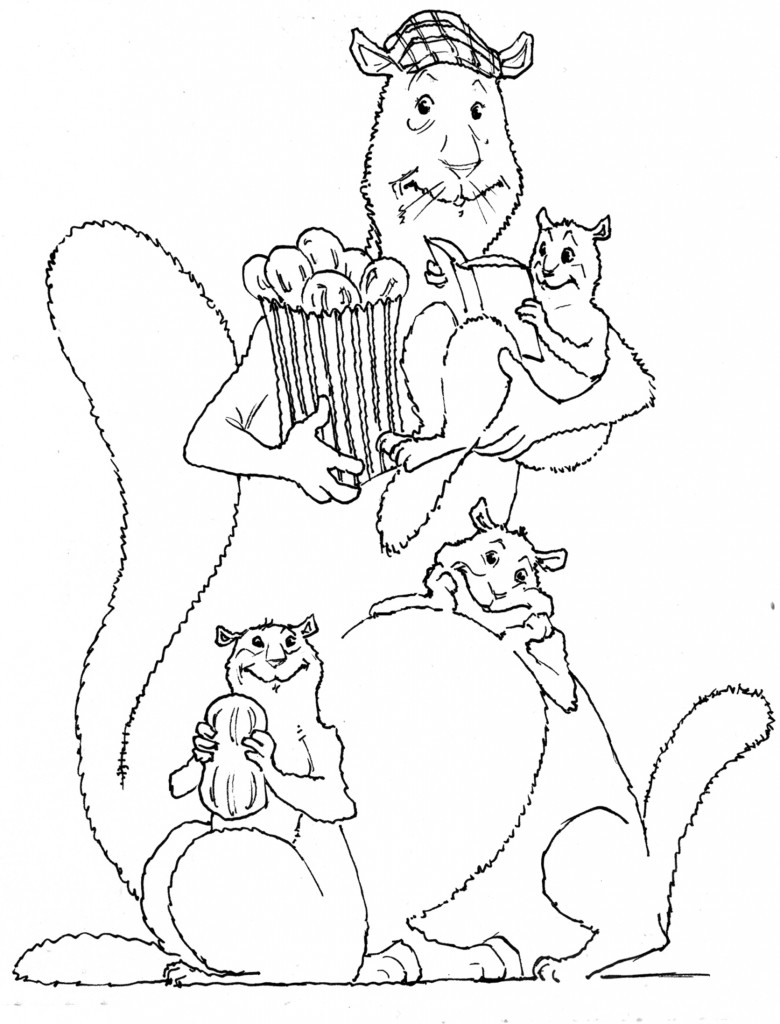
When a child retells a story, they are showing how much they understand. They are moving from just listening to a book to making connections.
Playing the book lets your child to go beyond retelling by extending the story with their own imagination. Use this link to print out Groundhog and all his friends (or click on the cover of my book in the upper right-hand corner of this screen for puppets and more free fun stuff to do!) Give the characters funny voices when they try to convince Groundhog to make Spring come early or to keep Winter lasting longer. Give the characters new adventures. Take time to play. And may this year bring us all more joy.
Read MoreReading an “Again, again!” book in a new way
Happy Almost-the-End-of-2020! I think this year has been most challenging for those living with or working with small children. How do you keep them enticed if you can’t get new books from the library or from school? How do you keep yourself from going nuts if you’re tired of rereading the same books? Here’s how.
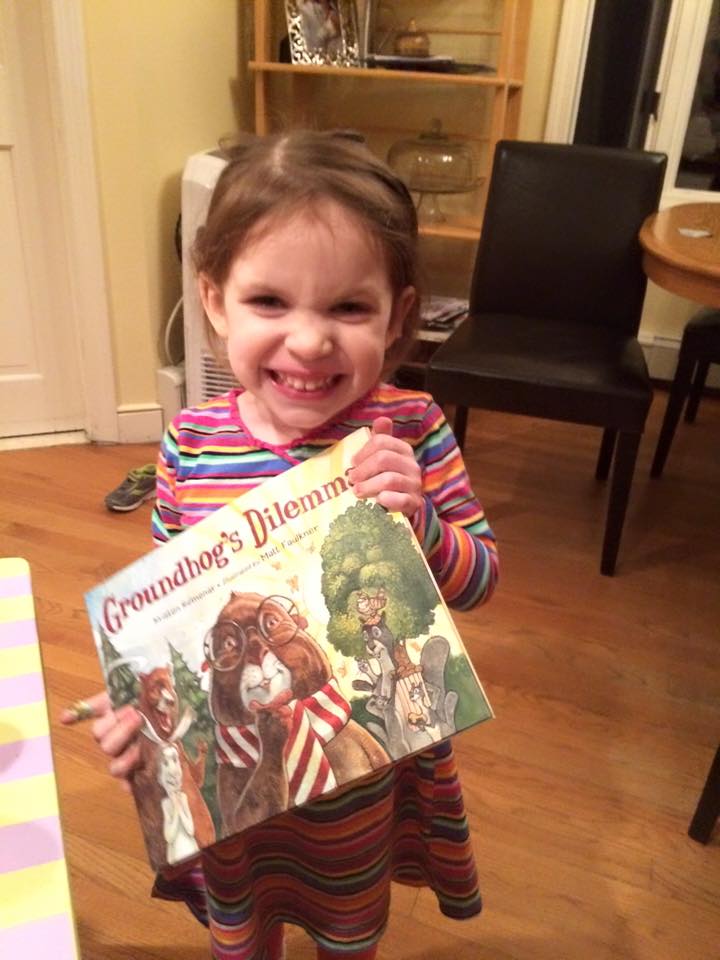
Ask your child, “What do you notice when you look at the cover of this book?” It’s really interesting to hear the details kids notice that we adults may not, the details the illustrator intentionally puts in.
“I see faces in the trees!”
“I see them now, too! Do you notice anything else?”
“The trees have snow on this side and the tree over here doesn’t have snow. So that’s winter and that’s not winter.”
“I wonder why the illustrator drew the trees that way. “
You can talk about what you see until your child is done reading the picture and wants to hear the words. The pictures often give information that the words don’t. Reading pictures is a big part of learning to read words.
This technique of letting kids lead the reading was a big shift for me as a teacher/librarian. I’m eager to get to the words. I’ve often told kids what I want them to learn from the book, trying to pour in knowledge. Lifelong learners are gatherers of knowledge. We can put kids in charge of pulling in meaning first.
Even if it’s a book you’ve read a dozen times, encourage your child to take the lead. They can tell you what they see and show you how their minds are making meaning. You may see the familiar book in a new way when your child says, “Again, again!”
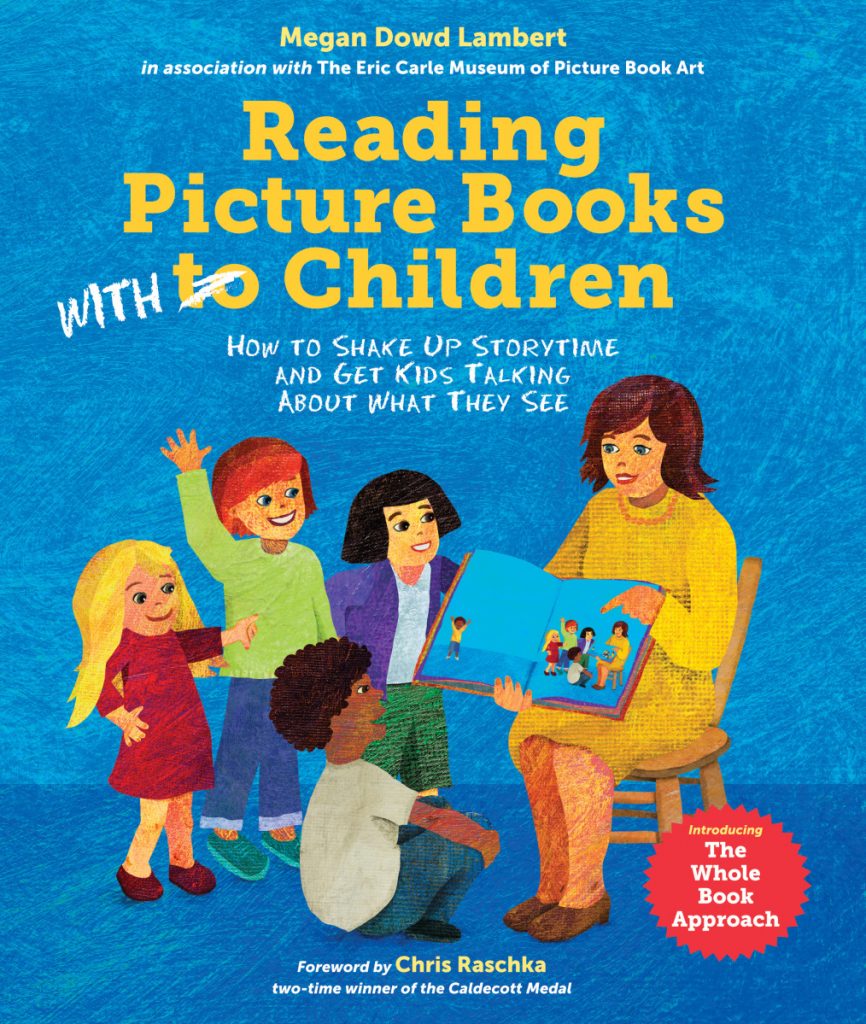
This Whole Book Approach is wonderfully taught by Megan Dowd Lambert in her book, “Reading Picture Books With Children: How to Shake Up Storytime and Get Kids Talking About What They See”. I highly recommend it!
Read MoreCelebrate all the BEAUTIFUL HANDS!
 August is crazy-busy for teachers and parents of little learners, so grab this book for a quick-prep, interactive lesson: BEAUTIFUL HANDS by Kathryn Otoshi and Bret Baumgarten.
August is crazy-busy for teachers and parents of little learners, so grab this book for a quick-prep, interactive lesson: BEAUTIFUL HANDS by Kathryn Otoshi and Bret Baumgarten.
The book begins with a question, “What will your beautiful hands do today?” which leads to more questions with inspiration-sparking answers:
“Will they lift…/
spirits?/
Or stretch…/
imaginations?”
There are also invitations to participate (“What can you lift?” “What can you stretch?”) that will especially hook your movers and shakers.
All of the art is made of handprints, so after sharing the book, make handprint art! Paint, trace, color, cut, arrange into a mural that encourages us all to reach high. Write about what our hands can and will do, discuss how our hands are alike and still uniquely ours. Reread BEAUTIFUL HANDS and compare it to the book THE HANDIEST THINGS IN THE WORLD by Andrew Clements and Raquel Jaramillo. 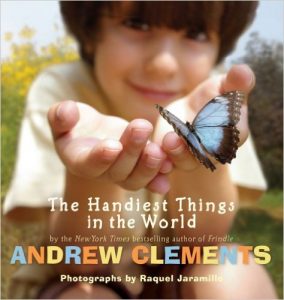
All who work with little ones deserve a big hand, so consider this post a “high five” from me to you as you start the school year!
Read More



